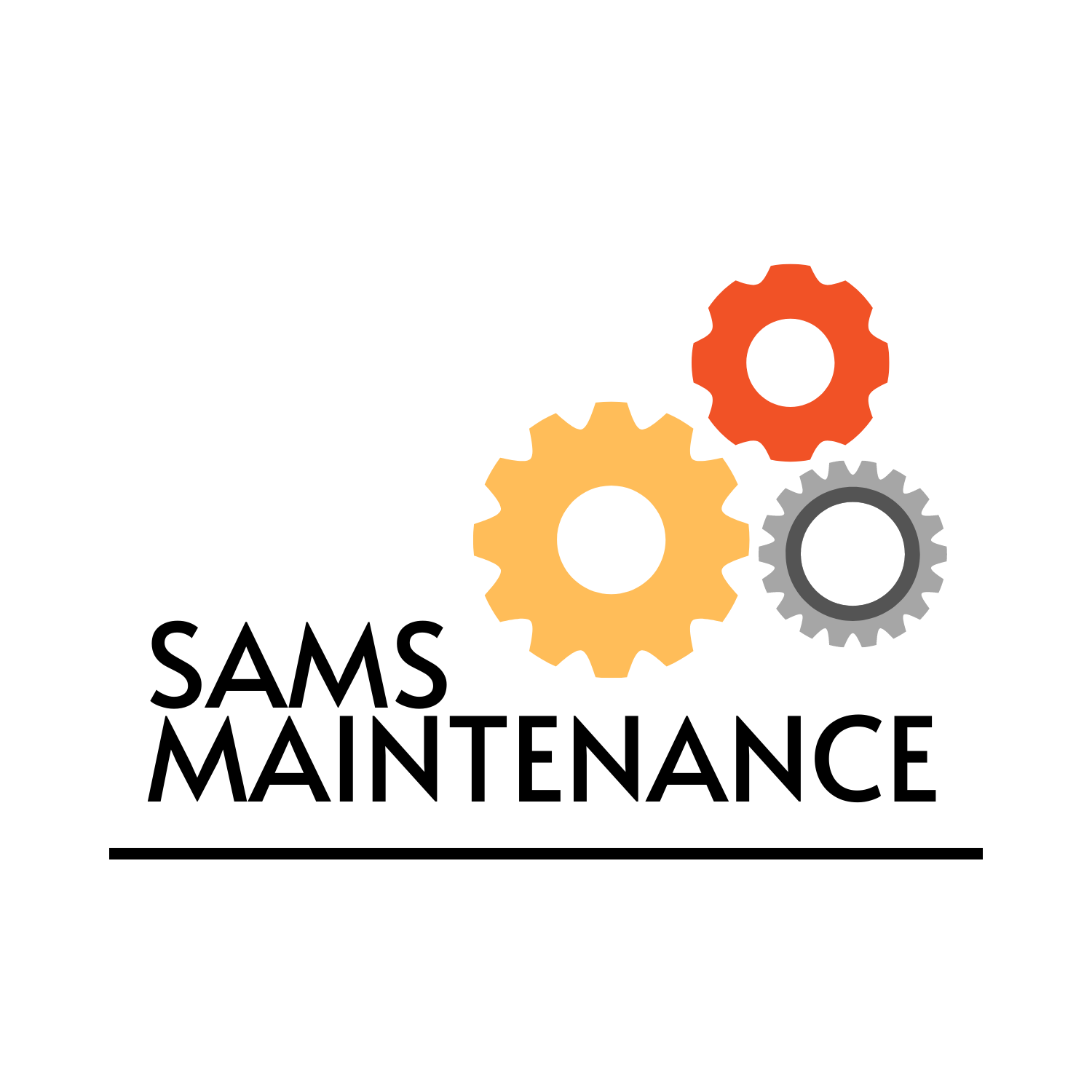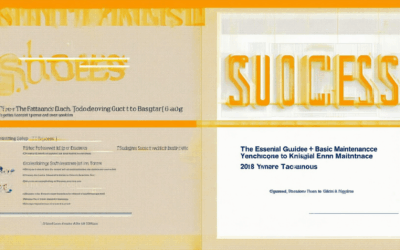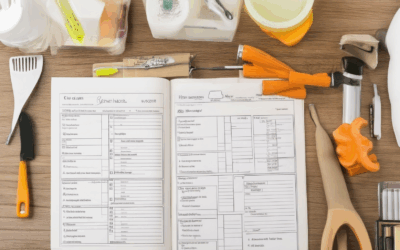Keeping a home in top shape can often feel overwhelming, especially when faced with endless maintenance tasks that pile up faster than you can tackle them. While household maintenance projects may seem daunting, they are essential for preserving the value of your property and ensuring it remains a safe, comfortable space for years to come. Whether you’re dealing with minor fixes or major renovations, prioritizing regular maintenance is key to avoiding costly repairs and extending the lifespan of your home. In this ultimate guide, we’ll walk you through everything you need to know about household maintenance projects, including tips, checklists, and strategies to stay ahead of potential issues. From understanding the basics of what constitutes a maintenance project to learning how to create a personalized schedule, this comprehensive resource will empower you to take control of your home’s upkeep and enjoy the benefits of a well-maintained living space.
Key Takeaways
– Prevent Costly Repairs: Regularly inspect your home to catch issues before they escalate, ensuring long-term savings and home longevity.
– Comprehensive Coverage: Maintain your household with a structured plan covering exteriors, interiors, landscapes, and more, keeping everything in top shape.
– Schedule Regular Checks: Establish a timetable for inspections to ensure early detection of potential problems, promoting a healthy home environment.
– Call in Experts When Needed: Know when to seek professional help for specialized tasks, enhancing your home’s reliability and safety.
– Track Maintenance Efforts: Keep detailed records of all tasks and issues, providing valuable documentation for future reference and tax purposes.
– Extend Home Lifespan: Consistent maintenance extends the life of your home, ensuring it remains functional and beautiful for years to come.
– Stay Flexible and Adapt: Adjust your maintenance plan as needed to address changing needs and evolving home conditions.

Example of a Maintenance Project
A maintenance project is a planned activity focused on preserving, extending, or restoring the useful life of an asset, such as a building, piece of equipment, or property. Here’s an example:
- Residential Home Maintenance Project
- Painting Exterior Walls – Refreshing the exterior paint job to prevent peeling and maintain curb appeal.
- Gutter Cleaning and Repair – Removing debris and fixing leaks to prevent water damage.
- Landscaping and Yard Maintenance – Trimming trees, mowing grass, and installing new plants to keep the property looking neat and healthy.
- HVAC System Service – Inspecting and servicing the heating and cooling system to ensure optimal performance and energy efficiency.
- Appliance Maintenance – Cleaning and lubricating appliances like refrigerators, dishwashers, and ovens to extend their lifespan.
- Commercial Building Maintenance Project
- Roof Repairs and Maintenance – Fixing leaks and replacing damaged shingles to protect the building and its occupants.
- Plumbing System Renovation – Upgrading outdated pipes and fixtures to improve water efficiency and functionality.
- Electrical System Rewiring – Updating electrical systems to meet modern safety standards and reduce energy consumption.
- Fire Safety Systems Installation – Installing fire alarms, sprinklers, and smoke detectors to enhance property security.
- Industrial Machinery Maintenance Project
- Lubrication and Oil Changes – Ensuring smooth operation of heavy machinery through regular lubrication and oil replacement.
- Belting and Hose Replacement – Replacing worn belts and hoses to prevent mechanical failures and downtime.
- Pump Maintenance – Servicing pumps to maintain pressure and ensure consistent performance in production processes.
Regular House Maintenance Checklist
Keeping your house in great shape requires consistent effort. Here’s a detailed guide to help you stay on top of essential maintenance tasks:
- Exterior Maintenance
- Inspect the roof for missing or damaged shingles and repair as needed.
- Check walls for cracks, peeling paint, or signs of structural issues.
- Examine the foundation for cracks or shifting and address promptly.
- Clean gutters and downspouts to prevent clogs and water overflow.
- Inspect driveways and walkways for cracks or uneven surfaces.
- HVAC System
- Change or clean air filters monthly to maintain indoor air quality.
- Inspect ductwork for leaks or blockages and clean if necessary.
- Schedule regular service for your water heater to prevent leaks and ensure efficient operation.
- Plumbing
- Check for leaks under sinks, around pipes, and behind appliances.
- Test water pressure and ensure it meets local standards.
- Clean out lint traps in clothes dryers and check dishwasher drain lines.
- Electrical Systems
- Test electrical outlets for safety and function.
- Inspect switches and sockets for overheating or flickering lights.
- Check circuit breakers and GFCI outlets, especially in damp areas.
- Fire Safety
- Test smoke detectors and carbon monoxide detectors monthly.
- Ensure fire extinguishers are fully charged and within expiration dates.
- Landscape and Yard
- Prune trees and shrubs to maintain health and prevent damage.
- Inspect lawns for dead spots, pests, or nutrient deficiencies.
- Clear debris from yards to prevent moisture buildup and mold growth.
- Windows and Doors
- Check for drafts and ensure windows and doors are energy-efficient.
- Lubricate hinges and locks to maintain smooth operation.
- Replace window screens and inspect for tears or damage.
- Chimney and Flue
- Hire a professional to clean and inspect the chimney annually.
- Check for cracks or damage in the chimney structure.
- Water Systems
- Test sump pumps during rainy seasons to ensure proper drainage.
- Inspect sprinkler systems for proper coverage and functionality.
- Attic and Crawl Space
- Check for rodent activity and signs of pests.
- Ensure vents are clear to promote proper ventilation and air quality.
- Appliance Care
- Clean refrigerator coils regularly to improve appliance efficiency.
- Check stove and oven for gas leaks and clean interior surfaces.

Understanding the 1% Rule for Home Maintenance
The 1% rule for home maintenance is a simple yet effective strategy to prepare for unexpected repair costs. Here’s a breakdown of what it involves:
- 1% of the Home’s Purchase Price : Set aside 1% of the total price you paid for your home each year for maintenance. This creates a reserve fund to cover unforeseen repair costs.
- Annual Budget Calculation : For a $300,000 home, this would mean saving $3,000 annually or approximately $250 monthly.
- Purpose of the Fund : This money is meant for repairs, replacements, and unexpected issues like plumbing, electrical work, or roof damage.
Why the 1% Rule Works:
- Preparedness : Helps avoid financial stress when emergencies occur.
- Longevity : Regular maintenance can extend the life of your home and reduce major repair costs over time.
- Flexibility : Allows you to address specific needs based on your home’s condition.
Considerations Beyond the 1% Rule:
- Home Age and Condition : Older homes may require more frequent maintenance, potentially increasing your annual contribution.
- Specialized Systems : Homes with unique features like septic tanks or solar panels may need additional funding.
- Unexpected Costs : Natural disasters or rare appliance failures can exceed typical maintenance budgets.
To Enhance Your Maintenance Plan:
- Create a Detailed Budget : Track all maintenance expenses and adjust your savings accordingly.
- Prioritize Repairs : Address minor issues before they escalate to prevent costly damage.
- Consider Insurance : Explore maintenance coverage options to supplement your savings.
For More Resources:
- HomeAdvisor – Connect with local professionals for home maintenance services.
- Fixer Upper – Tips and guides for DIY home maintenance projects.
- Sams Maintenance – Expert advice and resources for homeowners.
By following the 1% rule and staying proactive, you can protect your home and budget from unexpected expenses.

Creating a Comprehensive House Maintenance Plan
A well-organized house maintenance plan ensures your home remains in excellent shape, preventing minor issues from becoming major problems. Here’s a detailed guide to crafting an effective plan tailored to your needs:
Exterior Maintenance
- Roof Inspection: Check for leaks, missing shingles, or damaged flashing. Inspect twice yearly (spring and fall).
- Siding Check: Look for cracks, peeling paint, or rot. Address issues promptly to prevent further damage.
- Gutter Cleaning: Remove debris and ensure they’re directing water away from your home. Clean seasonally.
Interior Systems
- HVAC Service: Schedule annual tune-ups to ensure efficiency and prevent breakdowns. Replace filters monthly.
- Plumbing Check: Look for leaks under sinks, around pipes, and near appliances. Test water pressure monthly.
- Electrical Systems: Inspect sockets, switches, and wiring for damage or wear. Test GFCIs monthly.
Landscape Care
- Tree Trimming: Keep trees and shrubs trimmed to avoid encroachment on your property and foundation issues.
- Lawn Care: Monitor for weeds, pests, and soil health. Schedule sprinkler system inspections every three months.
House Interior
- Floor Inspection: Check hard surfaces for wear. Polish or refinish as needed, typically every six months.
- Wall Condition: Look for cracks or peeling paint. Repaint as necessary, ideally every two years.
- Window Checks: Inspect for drafts, damaged seals, or moisture buildup. Replace weatherstripping annually.
Kitchen and Bathroom Maintenance
- Kitchen Appliance Check: Ensure refrigerators, stoves, and dishwashers function properly. Clean countertops regularly.
- Bathroom Tile and Grout: Seal grout lines and check for mildew. Scrub tiles monthly and test shower drains weekly.
- Leak Detection: Inspect under sinks and around pipes for leaks. Test supply lines monthly.
Garage and Driveway
- Garage Door Safety: Test operation and examine springs for damage. Lubricate tracks monthly.
- Driveway Inspection: Fill cracks and remove weeds. Pressure wash the surface every few months.
Attic and Storage Areas
- Attic Inspections: Look for pests, rodent droppings, or sagging ceilings. Ensure insulation is intact, typically once yearly.
- Storage Area Maintenance: Organize items to prevent clutter and check for moisture or mold in basements.
Record-Keeping
- Task Logs: Maintain a written or digital log of completed tasks and issues identified. Update this periodically to track progress.
- Service Providers: Keep a list of trusted contractors and service companies for quick access when needed.
By following this structured maintenance plan, you can protect your home from costly repairs and extend its lifespan. Regular checks and timely interventions are key to maintaining a safe, comfortable living environment. For more detailed guides and tools, visit our maintenance resources .
What is not covered in a maintenance plan?
A maintenance plan typically covers routine services, inspections, and preventive measures to keep your vehicle in optimal condition. However, there are several items that are often excluded from standard maintenance plans:
- Routine Inspections: While some plans may include visual checks, they usually don’t cover detailed inspections like those required for emissions or safety standards.
- Fluid Replacements: Oil, transmission fluid, and coolant may only be partially covered or require additional fees.
- Emissions Testing: Most basic plans do not include emissions testing or related repairs.
- Exterior Components: Items like wiper blades, mirrors, and exterior lights are often excluded unless specified in the plan.
- Interior Components: Seats, door panels, and interior lighting may not be covered under standard plans.
- Advanced Wear and Tear: Components like engines, transmissions, and suspension systems may exceed typical wear limits and require extra costs.
- Custom Parts: Aftermarket additions or modifications not originally equipped may not be covered.
Always review the specific terms of your maintenance plan with your provider to ensure you’re aware of what is and isn’t included. Coverage can vary depending on the type of vehicle and the plan selected.
Learn more about our maintenance plans to ensure your vehicle receives the care it needs.

How to Draw Up a Maintenance Plan
To create an effective maintenance plan, follow these organized steps:
- Define Your Goals : Start by clarifying why you need a maintenance plan. Is it for a home, vehicle, equipment, or something else? Knowing your objectives will shape the plan’s direction.
- Prioritize Critical Tasks : Identify essential maintenance tasks that must be done regularly. These could include things like checking pipes, oil changes, or appliance inspections.
- Create a Schedule : Establish a timeline for completing each task. Group similar tasks together, such as monthly checks or quarterly inspections, to streamline the process.
- List Required Resources : Gather necessary tools, materials, and possibly professional services needed to execute the plan effectively.
- Assign Responsibilities : Determine who will handle each task. This could be yourself, a family member, or hiring a professional service provider.
- Set a Budget : Estimate costs for parts, labor, and any specialized services required. Stick to this budget to avoid unexpected expenses.
- Choose the Right Tools : Select the appropriate tools and equipment for the job. Consider tools like a ladder, multimeter, or pressure washer based on the tasks involved.
- Develop a Checklist : Create a checklist tailored to your specific needs. Include tasks like checking for leaks, testing appliances, or inspecting the property for signs of wear.
- Stay Organized : Use a calendar or digital tool to track due dates for each maintenance task. Regular reminders will help ensure nothing gets overlooked.
- Review and Adjust : Periodically evaluate the plan to see what works and what doesn’t. Make adjustments as needed to keep the maintenance schedule effective and efficient.
- Consider Professional Help : If certain tasks require expertise, don’t hesitate to hire professionals. Look for reputable services like Sam’s Maintenance or competitors such as Home Depot or Lowe’s for reliable assistance.
- Document Everything : Keep records of maintenance activities, including dates, tasks performed, and any issues identified. This documentation can be invaluable for future reference or for tax purposes.
By following these steps, you’ll create a well-rounded maintenance plan that ensures longevity and reliability for whatever you’re maintaining. Remember to stay consistent and adapt as needed to keep everything running smoothly.




0 Comments